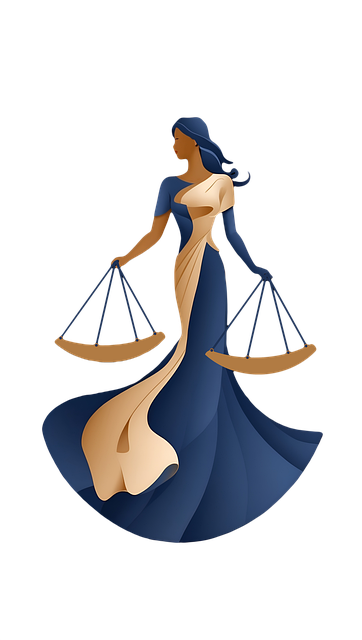Understanding entrapment defenses in criminal law is crucial, especially for white-collar crimes, as it can significantly impact the outcomes of cases. Entrapment occurs when law enforcement officers induce individuals to commit crimes they wouldn't have otherwise, and both prosecutors and defendants must navigate complex standards and tactics. Effective entrapment defenses require thorough documentation and testimony, potentially leading to charge dismissal or reduction. Defense attorneys play a vital role in jury trials by uncovering these strategies, ensuring fairness, and protecting the rights of accused persons, whether corporate or individual. Real-world examples illustrate the practical value of understanding entrapment defenses, safeguarding individuals and businesses from unjust prosecution.
In the complex landscape of criminal law, understanding various litigation types is paramount for both legal professionals and individuals facing charges. This article offers a comprehensive guide to Entrapment Defenses, delving into their role as strategic tools for accused persons. We explore the nuances of Types of Criminal Litigation, focusing on entrapment strategies, key case standards, and real-world examples that shape criminal law. Gain insights into navigating these defenses effectively.
- Types of Criminal Litigation: An Overview
- Entrapment Defenses: Legal Strategies for Accused Individuals
- Key Elements and Standards in Entrapment Cases
- Real-World Examples and Their Impact on Criminal Law
Types of Criminal Litigation: An Overview

In criminal litigation, understanding entrapment defenses is crucial for both prosecutors and defendants. Entrapment occurs when law enforcement officers induce a person to commit a crime they wouldn’t have otherwise contemplated or committed. This legal doctrine is designed to protect individuals from being unfairly prosecuted due to excessive police involvement. For his clients, achieving extraordinary results often hinges on crafting compelling entrapment defenses, particularly in cases involving white-collar crimes.
The two primary types of criminal litigation—indictment and misdemeanor charges—each have distinct entrapment defenses. In indictment cases, the defense must prove that law enforcement officers unduly pressured or tricked the defendant into committing a crime. Misdemeanor charges, while less severe, still require demonstrating government overreach in sparking the criminal act. Understanding these nuances is key to mounting an effective entrapment defense and ensuring fairness in the criminal justice system.
Entrapment Defenses: Legal Strategies for Accused Individuals

Entrapment defenses are a crucial aspect of criminal law, offering legal strategies for accused individuals who claim they were set up or induced to commit a crime. Understanding entrapment defenses involves grasping how law enforcement officers and government agencies might encourage or manipulate potential criminals into breaking the law. This strategy, while sometimes used to catch serious offenders, has raised significant ethical concerns within the philanthropic and political communities.
When an individual is accused of a crime they claim was orchestrated by law enforcement or informants, they may argue that they were unduly influenced to commit an act they would not have otherwise done. In such cases, successful entrapment defenses can lead to the dismissal of charges or reduced sentences. Jury trials play a pivotal role in these scenarios, as jurors must weigh the evidence and determine whether the defendant was genuinely inclined towards criminal activity before being persuaded by external factors. Whether dealing with corporate and individual clients, effective entrapment defense strategies require meticulous documentation and testimony to demonstrate the elements of entrapment and protect the rights of the accused.
Key Elements and Standards in Entrapment Cases

In understanding entrapment defenses in criminal law, it’s crucial to grasp the key elements and standards that define such cases. Entrapment occurs when law enforcement officers induce a person to commit a crime they wouldn’t have otherwise contemplated or committed. To establish this defense, individuals must prove two main elements: first, that government agents provoked the criminal act, and second, that their actions were the compelling cause of the crime. This is often a complex winning challenging defense verdicts due to the nuanced nature of law enforcement operations, but it’s a critical right in ensuring corporate and individual clients are not unfairly prosecuted.
The standards for entrapment vary across jurisdictions, but they typically require an objective standard where a reasonable person would be induced to commit the crime under similar circumstances. This includes examining the tactics used by law enforcement, such as persistent persuasion, false promises of leniency, or leveraging vulnerabilities. In jury trials, defense attorneys play a vital role in uncovering these entrapment strategies and presenting them to the jury, aiming to secure not-guilty verdicts for their clients.
Real-World Examples and Their Impact on Criminal Law

In the realm of criminal law, real-world examples often shape and reflect the nuances of various litigation types. One compelling instance is the entrapment defense, which has significantly impacted how high-stakes cases are approached. Understanding entrapment defenses is crucial in navigating complex legal landscapes, especially when businesses or individuals face charges stemming from allegedly enticing activities. This strategic approach can lead to the complete dismissal of all charges, underscoring its importance in safeguarding against unjust prosecution.
For instance, if a respective business is accused of luring customers through deceptive practices, an entrapment defense might argue that their actions were prompted by law enforcement, not their own volition. Such strategic legal arguments can prevent a mere business practice from turning into a criminal offense, demonstrating the practical application of these defenses in real-world scenarios.
Understanding entrapment defenses is crucial for navigating the complexities of criminal litigation. By examining various types of criminal cases, exploring strategic legal defenses like entrapment, and understanding the key elements that define successful claims, individuals can ensure fair outcomes in court. Real-world examples highlight the profound impact these defenses have on shaping criminal law, underscoring their importance as a safeguard against unjust prosecution. This knowledge empowers both accused persons and legal professionals to navigate the intricate landscape of criminal justice with greater awareness and advocacy.






